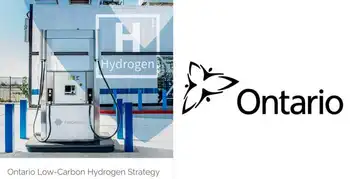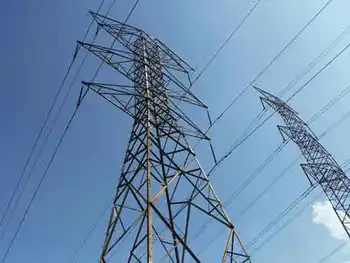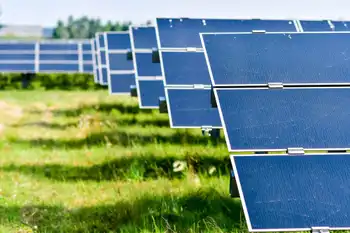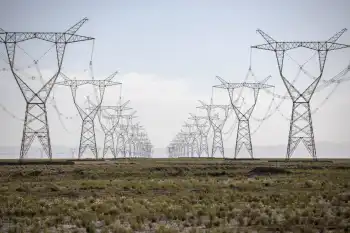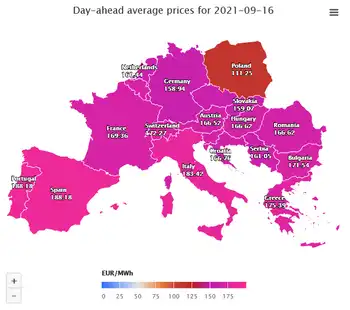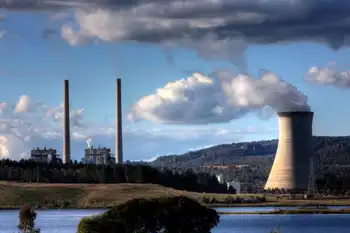Filling up at home is the goal
By New York Times
Substation Relay Protection Training
Our customized live online or in‑person group training can be delivered to your staff at your location.

- Live Online
- 12 hours Instructor-led
- Group Training Available
Over the next two weeks, he will finalize a deal to buy the Canadian company that makes it.
The transaction is small - $17-million in cash for FuelMaker Inc., a Toronto fuel systems maker with 60 employees located near Pearson International Airport. But the vision behind it is big: Make it easy for millions of North Americans to fill up their cars at home with natural gas.
Mr. Pickens is no ordinary investor. A native of Oklahoma who made his fortune exploring for oil, he is now among the most high-profile advocates pushing U. S. lawmakers to wean the country off its $700-billion-a-year addiction to imported energy. And FuelMaker is a key part of his blueprint for change.
"[Foreign oil] is a strangehold on our country that we can't live with, It's that simple," Mr. Pickens says on the Web site for his Pickens Plan, which he unveiled in July and is pushing with a US$58-million advertising budget. "Natural gas will do the job. It's a good transportation fuel. It's cleaner. It's cheaper. And it's domestic."
By "domestic" Mr. Pickens means local and plentiful. According to a recent study by the American Clean Skies Foundation, the United States has enough natural gas lodged in shale deposits to last 118 years and the technology to remove it economically.
Canada, the second-largest producer of natural gas in the western hemisphere after the United States, pumps more than half its marketable output to its neighbour.
The Pickens Plan calls for the United States to replace the natural gas it now uses to generate 22% of its overall energy requirements with wind power from a giant wind corridor stretching across the Great Plains states. Natural gas would be earmarked for transportation instead, cutting U. S. spending on foreign fuel by US$300-billion a year.
Clean Energy Fuels Corp., a publicly traded company controlled by Mr. Pickens, is buying FuelMaker from Honda Motor Co. The largest supplier of natural gas for transportation in the United States, its public and private fuelling stations service 14,000 commercial vehicles a day for customers including truckers, sea and airport operators, and transit corporations.
Now it is setting its sights on a potentially bigger prize: the home.
There are an estimated seven times as many personal-use vehicles as commercial vehicles in North America. Convert them to natural gas, the thinking goes, and you change the energy game.
FuelMaker's home vehicle refuelling unit aims to do just that. Called the Phill, it taps the same gas line as homeowners use for their furnace or barbecue.
Honda has owned FuelMaker since 2002 and developed the system's technology. Now the Japanbased auto company wants Clean Energy to market it widely.
"We see Clean Energy as a company that has the resources and the network to take this to a whole different level that we weren't really capable of," says David Iida, spokesman for Honda North America. "[The move to natural gas] is finally starting to gain some momentum."
In other parts of the world, natural gas vehicles are already in widespread use. Argentina, Pakistan and Brazil each have more than 1.5 million natural gas vehicles in use and Europe collectively has about 812,000.
For some jurisdictions, such as New Delhi, the aim is to cut pollution. All of the city's public buses and taxis are required to be natural gas-powered because it burns cleaner than regular gasoline.
FuelMaker says it has sold more than 12,000 of its commercial and home-refuelling units worldwide, many of them to utilities such as Gaz de France, which rents the machines to its customers.
Where natural gas vehicles have taken off, the differential in price between natural gas and conventional fuels is 50% or better, says Alicia Milner, president of the Canadian Natural Gas Vehicle Alliance.
"It creates a more stable pricing condition to get the technology more entrenched in the marketplace," she says. "Here, we've had more volatility."
In North America, the popularity of compressed natural gas cars surged in the early 1980s when gasoline prices spiked. But it later buckled as prices retreated and ethanol gained ground.
Today, the United States has barely 146,000 natural gas vehicles. Canada has 12,000, including Enbridge Gas Distribution's fleet and the Zambonis at Toronto's Air Canada Centre.
"In North America, they just haven't got it yet," says John Lyon, president of FuelMaker Corp. There just wasn't enough of a financial impetus for North American consumers and businesses to make the change permanently, he says. "Until now. Now that you've got gasoline getting up there, the economics are working."
Buying natural gas on contract from a utility has the advantage of locking in prices. Clean Energy says recent prices for consumers using the Phill at home in Southern California were as low as US$1.60 per gallon. That's twice as cheap as the current US$3.75 per gallon U. S. motorists are paying on average today nationwide, according to gasbuddy.com. Still, there are problems to overcome before natural gas pierces the commercial vehicle market and becomes truly mainstream.
Only B. C., Alberta, Saskatchewan and Ontario have public refuelling stations for natural gas in Canada. Public infrastructure would have to be boosted.
Affordability is also an issue. Tax incentives in some U. S. states have helped consumers afford Phill's US$4,000-plus installation price tag. That cost will have to come down further for larger consumer acceptance, Ms. Milner says.
In addition, there is a lack of specialized cars. Most individual natural gas vehicle owners in Canada modified existing vehicles to work on natural gas with conversion kits. Although General Motors Corp., Daimler AG and others sell compressed natural gas vehicles in Europe and elsewhere, they don't sell them in North America. Honda's Civic GX is the only factory-made natural gas vehicle for sale on this continent.
But perhaps the largest near-term obstacle to widespread natural gas transportation is Mr. Pickens himself. Rightly or wrongly, there is a perception by some critics in the United States that the oilman's efforts to push that option is driven by a thirst to profit from the change.
Clean Energy's sponsorship of a state ballot initiative called Proposition 10 is one example. The proposal, which Californians will vote on in the Nov. 4 presidential election, calls on the state to provide US$2.5-billion worth of rebates for buyers of vehicles that run on alternative fuels such as hydrogen or natural gas.
"The purchase of [FuelMaker] is even more evidence of Prop 10 being nothing more than a way to enrich Mr. Pickens," says Richard Holober, head of the Consumer Federation of California. In addition to "throwing billions of dollars at trucking companies to underwrite their purchase of natural gas-powered vehicles," the bill earmarks $25-million for home-fuelling appliances, Mr. Holober says. "And guess what? That means more government subsidy for Mr. Pickens' corporation." California is going broke and cannot afford public money that is better spent on health and education, he says.
Clean Energy has said there is no guarantee the company will cash in, and that the proposal is intended to create a market for low-carbon fuel vehicles.
Mr. Lyon and Ms. Milner argue the FuelMaker transaction will help build that momentum. They say consistent public policy on transportation, in both Canada and the United States, is needed to move drivers away from conventional fuels.
"It has to change. And it will change," Mr. Lyon says. "The big driving force now is the oil shortage, the price and the fact that the U. S. is exporting so many U. S. dollars to buy oil."





